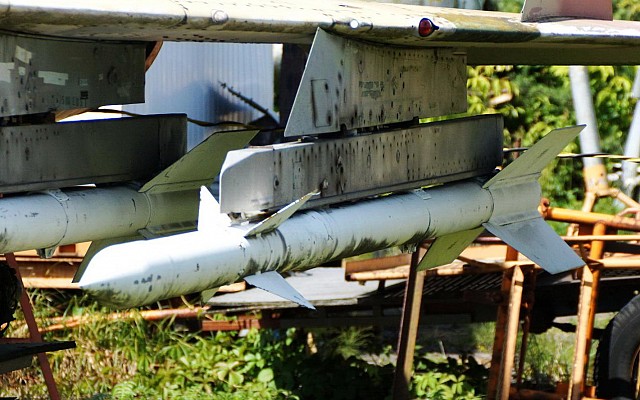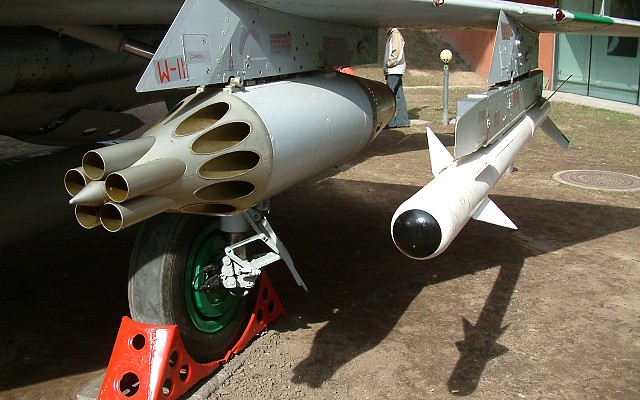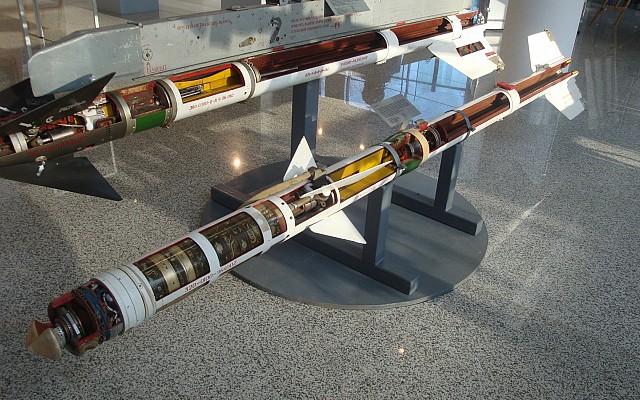Vympel R-3
NATO: AA-2 Atoll
Overview
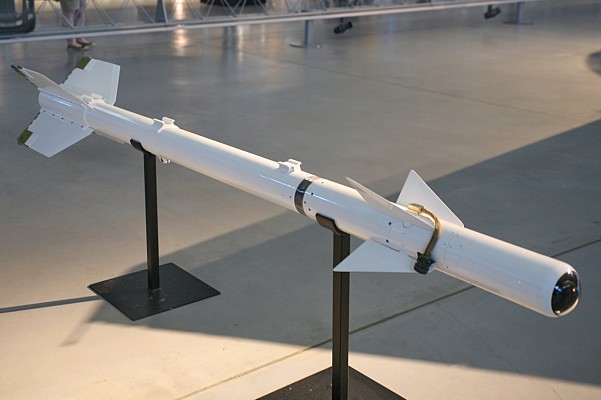
R-3S
Soviet R-3S (NATO: AA-2B Atoll B) infrared homing missile on display in a museum.
Source: cliff1066 -
© CC BY-SA 2.0
1967 for R-3R
1959 (Soviet state trials for R-3S)
1962 - 1966 (Soviet state trials for R-3R)
1966 - ? (R-3R)
K-13A (entire complex for R-3A)
K-13R (entire complex for R-3R)
Description
Introduction
The R-3 is an early Cold War era short range air to air missile of Soviet origin. Development began in the mid 1950's and was greatly influenced by espionage and captured American AIM-9B Sidewinder missiles. The decision was made to practically reverse engineer the entire AIM-9B and include only limited amounts of Soviet components. the NATO reporting name is AA-2 Atoll.
Design
The R-3S is a near direct copy of the American AIM-9B Sidewinder missile. The reverse engineering was carried out to such a degree that many parts are interchangeable. The main differences are a different type of rocket fuel and the design of the seeker head, although performance is roughly similar. The R-3R was introduced half a decade later and has a longer body with semi-active radar homing head. This was a domestic development analogous yet different to the American AIM-9C.
Guidance
The R-3S has a passive infrared homing seeker. The seeker is uncooled and has a limited tracking rate. This makes it vulnerable against flares and maneuvering targets. The R-3R is a variant with semi-active radar homing. It is intended for high altitude interception of non-maneuvering targets. The R-3S is a rear aspect only missile. The R-3R also has a limited head on capability.
Firepower
The R-3S provided a similar capability as the American AIM-9B Sidewinder. Maximum effective range was 7.6 km, with a minimum range of 0.9 km. The uncooled seeker of the R-3S is easily foiled by infrared flares. The same goes for the R-3R with chaff respectively.
Platforms
The R-3S was introduced on a wide range of Soviet fighter aircraft. These include (variants of) the MiG-17, MiG-19, MiG-21, MiG-23, Su-7, Yak-25 and various others. The R-3R requires a compatible radar to illuminate the target. The include the MiG-21S up to the final MiG-21bis variant and early models of the MiG-23.
Users
The R-3S was adopted by the Soviet Union in 1962 and used in large quantities on many types of aircraft. Large numbers were exported. China produced their local copy as the PL-2. The radar guided R-3R was less common, but still used in quantity. The R-3R was also exported to various nations. The introduction of the improved R-13M (NATO: AA-2D or AA-2-2 Advanced Atoll) or new R-60 (NATO: AA-8 Aphid) designs made the R-3S obsolete in Soviet service.
Variants
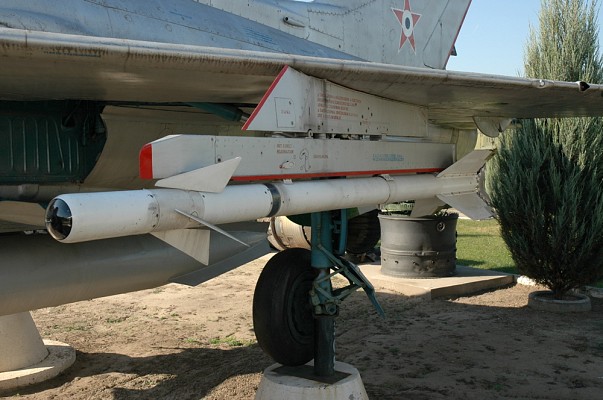
R-3S
Soviet R-3S (NATO: AA-2B Atoll B) infrared homing missile seen under the wing of a MiG-21 on display in a museum in Hungary in 2005.
Source: Varga Attila -
© CC BY-SA 3.0
List of R-3 missiles
Details
Media
Related articles
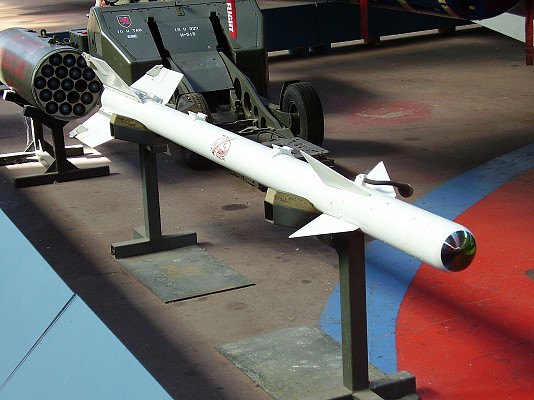
AIM-9B Sidewinder
The R-3S is a near direct copy of the American AIM-9B Sidewinder. One missile was recovered and sent to the Soviet Union for testing and reverse engineering after getting stuck in the fuselage of a Chinese MiG-17 during the Second Taiwan Strait Crisis in 1958.
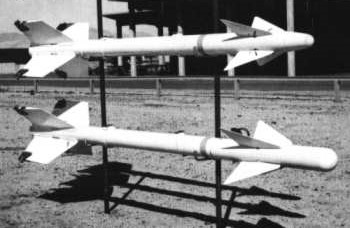
AIM-9C Sidewinder
The R-3R was not a direct copy of the American AIM-9C but was a domestic development. The Soviet R-3R has a much larger homing section than the AIM-9C. Unlike the AIM-9C the R-3R proved relatively capable and successful under more capable designs were introduced.
